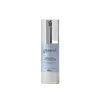What's inside
What's inside
 Key Ingredients
Key Ingredients

 Benefits
Benefits

 Concerns
Concerns

 Ingredients Side-by-side
Ingredients Side-by-side

Water
Skin ConditioningAloe Barbadensis Leaf Juice
Skin ConditioningGlycerin
HumectantFulvic Acid
Skin ConditioningPolysorbate 20
EmulsifyingPentylene Glycol
Skin ConditioningPropanediol
SolventHypnea Musciformis Extract
Skin ProtectingSargassum Filipendula Extract
Skin ProtectingPhenoxyethanol
PreservativeSorbitol
HumectantAllantoin
Skin ConditioningHydroxyethylcellulose
Emulsion StabilisingPanthenol
Skin ConditioningSodium Hydroxide
BufferingCaprylyl Glycol
EmollientCitrus Paradisi Peel Oil
MaskingLactose
HumectantGelidiella Acerosa Extract
Skin ProtectingXanthan Gum
EmulsifyingPhospholipids
Skin ConditioningEthylhexylglycerin
Skin ConditioningCitrus Aurantium Bergamia Fruit Oil
MaskingCitrus Aurantium Dulcis Peel Oil
MaskingHexylene Glycol
EmulsifyingGlycine Soja Oil
EmollientMilk Protein
Skin ConditioningPolyglutamic Acid
Skin ConditioningEpilobium Angustifolium Extract
Skin ConditioningAgastache Mexicana Flower/Leaf/Stem Extract
Skin ConditioningTocopherol
AntioxidantGlycolipids
Skin ConditioningCitric Acid
BufferingPotassium Sorbate
PreservativeSodium Hyaluronate
HumectantGlycine Soja Sterols
EmollientSodium Benzoate
MaskingSymphytum Officinale Rhizome/Root Extract
Skin ConditioningAnthemis Nobilis Flower Extract
MaskingCalendula Officinalis Flower Extract
MaskingLavandula Angustifolia Flower Extract
CleansingSodium Metabisulfite
AntioxidantCoumarin
PerfumingLimonene
PerfumingLinalool
PerfumingCitral
PerfumingEugenol
PerfumingWater, Aloe Barbadensis Leaf Juice, Glycerin, Fulvic Acid, Polysorbate 20, Pentylene Glycol, Propanediol, Hypnea Musciformis Extract, Sargassum Filipendula Extract, Phenoxyethanol, Sorbitol, Allantoin, Hydroxyethylcellulose, Panthenol, Sodium Hydroxide, Caprylyl Glycol, Citrus Paradisi Peel Oil, Lactose, Gelidiella Acerosa Extract, Xanthan Gum, Phospholipids, Ethylhexylglycerin, Citrus Aurantium Bergamia Fruit Oil, Citrus Aurantium Dulcis Peel Oil, Hexylene Glycol, Glycine Soja Oil, Milk Protein, Polyglutamic Acid, Epilobium Angustifolium Extract, Agastache Mexicana Flower/Leaf/Stem Extract, Tocopherol, Glycolipids, Citric Acid, Potassium Sorbate, Sodium Hyaluronate, Glycine Soja Sterols, Sodium Benzoate, Symphytum Officinale Rhizome/Root Extract, Anthemis Nobilis Flower Extract, Calendula Officinalis Flower Extract, Lavandula Angustifolia Flower Extract, Sodium Metabisulfite, Coumarin, Limonene, Linalool, Citral, Eugenol
Water
Skin ConditioningFulvic Acid
Skin ConditioningAnthemis Nobilis Flower Water
MaskingNiacinamide
SmoothingUbiquinone
AntioxidantPyridoxine
Skin ConditioningPanthenol
Skin ConditioningSodium Hyaluronate
HumectantHydrolyzed Collagen
EmollientRiboflavin
Cosmetic ColorantMagnesium Ascorbyl Phosphate
AntioxidantTripeptide-29
Skin ConditioningPotassium Sorbate
PreservativeDisodium EDTA
Polysorbate 20
EmulsifyingSalicylic Acid
MaskingCitrus Aurantium Flower Oil
PerfumingCitrus Sinensis Peel Oil Expressed
PerfumingCitrus Reticulata Peel Oil
MaskingCitrus Paradisi Peel Oil
MaskingWater, Fulvic Acid, Anthemis Nobilis Flower Water, Niacinamide, Ubiquinone, Pyridoxine, Panthenol, Sodium Hyaluronate, Hydrolyzed Collagen, Riboflavin, Magnesium Ascorbyl Phosphate, Tripeptide-29, Potassium Sorbate, Disodium EDTA, Polysorbate 20, Salicylic Acid, Citrus Aurantium Flower Oil, Citrus Sinensis Peel Oil Expressed, Citrus Reticulata Peel Oil, Citrus Paradisi Peel Oil
Ingredients Explained
These ingredients are found in both products.
Ingredients higher up in an ingredient list are typically present in a larger amount.
Citrus Paradisi Peel Oil is the volatile oil expressed from the peel of the Grapefruit, Citrus paradisi, Rutaceae.
The term 'fragrance' is not regulated in many countries. In many cases, it is up to the brand to define this term. For instance, many brands choose to label themselves as "fragrance-free" because they are not using synthetic fragrances. However, their products may still contain ingredients such as essential oils that are considered a fragrance.
We don't have a description for Fulvic Acid yet.
Panthenol is a common ingredient that helps hydrate and soothe the skin. It is found naturally in our skin and hair.
There are two forms of panthenol: D and L.
D-panthenol is also known as dexpanthenol. Most cosmetics use dexpanthenol or a mixture of D and L-panthenol.
Panthenol is famous due to its ability to go deeper into the skin's layers. Using this ingredient has numerous pros (and no cons):
Like hyaluronic acid, panthenol is a humectant. Humectants are able to bind and hold large amounts of water to keep skin hydrated.
This ingredient works well for wound healing. It works by increasing tissue in the wound and helps close open wounds.
Once oxidized, panthenol converts to pantothenic acid. Panthothenic acid is found in all living cells.
This ingredient is also referred to as pro-vitamin B5.
Learn more about PanthenolPolysorbate 20 is made by combining ethoxylation of sorbitan, ethylene oxide, and lauric acid. It is a mild cleansing agent, surfactant, and emulsifier.
As a surfactant, it helps collect dirt and oils for washing. Emulsifiers prevent oils and water from separating.
Polysorbate 20 also adds scent to a product. Since it is made using sorbitol, it has a sweet scent. Sorbitol can also be found in fruits such as apples and peaches.
The lauric acid used to create Polysorbate 20 is often derived from coconuts.
Polysorbate 20 may not be fungal acne safe.
Learn more about Polysorbate 20Potassium Sorbate is a preservative used to prevent yeast and mold in products. It is commonly found in both cosmetic and food products.
This ingredient comes from potassium salt derived from sorbic acid. Sorbic acid is a natural antibiotic and effective against fungus.
Both potassium sorbate and sorbic acid can be found in baked goods, cheeses, dried meats, dried fruit, ice cream, pickles, wine, yogurt, and more.
You'll often find this ingredient used with other preservatives.
Learn more about Potassium SorbateSodium Hyaluronate is hyaluronic acid's salt form. It is commonly derived from the sodium salt of hyaluronic acid.
Like hyaluronic acid, it is great at holding water and acts as a humectant. This makes it a great skin hydrating ingredient.
Sodium Hyaluronate is naturally occurring in our bodies and is mostly found in eye fluid and joints.
These are some other common types of Hyaluronic Acid:
Learn more about Sodium HyaluronateWater. It's the most common cosmetic ingredient of all. You'll usually see it at the top of ingredient lists, meaning that it makes up the largest part of the product.
So why is it so popular? Water most often acts as a solvent - this means that it helps dissolve other ingredients into the formulation.
You'll also recognize water as that liquid we all need to stay alive. If you see this, drink a glass of water. Stay hydrated!
Learn more about Water